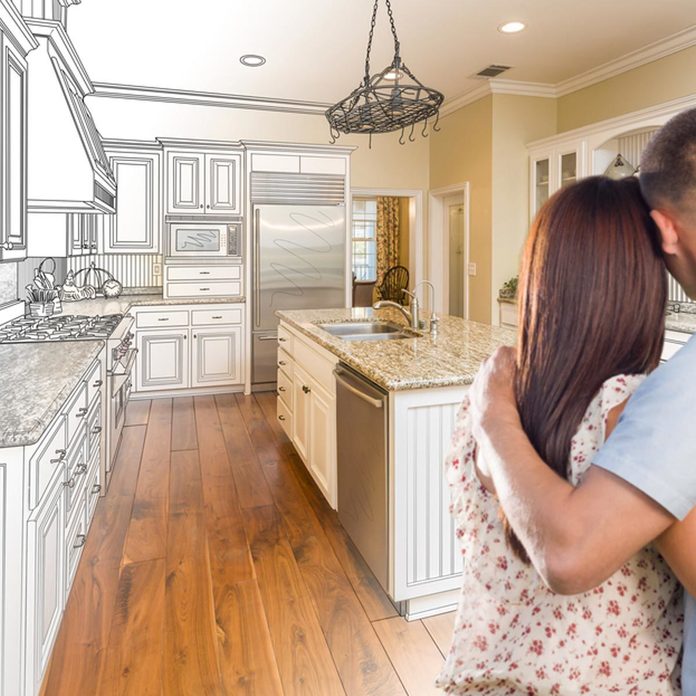
Remodeling a Kitchen
There’s no doubt that a kitchen remodeling project can be a major disruption to the normal flow of home life but it can make a big difference in increasing your home’s value. So how can you navigate through a kitchen remodel and keep everyone happy? Learn the mistakes to avoid in a kitchen remodel. These kitchen remodeling ideas will get you thinking about your own project.

Choosing Fragile Materials
Looks can be deceiving. Just because something looks pretty doesn’t mean it’s going to enhance your life. For the kitchen, make sure to choose durable materials. Limestone may look beautiful, but it’s vulnerable to water rings. Marble is prone to etching and staining. Recycled glass countertops may seem sleek, but they can chip and crack much easier than other options. Quartz is a great option for your renovation if you want the look but don’t want the problems. Here are some incredible kitchen remodeling ideas to consider.
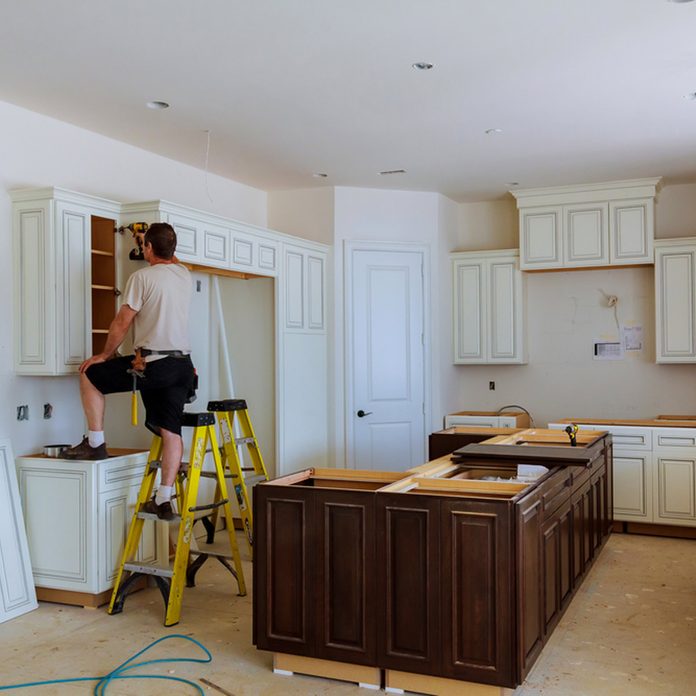
Forgoing Cabinets
There are a few legitimate reasons to consider skimping on the number of cabinets—perhaps you really want a window over the kitchen sink or you’re desperately seeking a minimalist aesthetic. While the idea of avoiding clutter in lieu of a more airy appearance sounds good, where are you going to put your plates? Never give up cabinet space during a renovation, unless you already have more than enough. Here’s how to remodel your kitchen for maximum storage and light.

Buying Cheap Appliances
Kitchen renovations are pricey, whether it’s a DIY kitchen renovation or you hire a pro, but don’t try to save money by choosing lower quality appliances. This may mean that to stay in budget you can’t get that super-fancy light fixture that you love, but having much-used appliances that are energy efficient and durable is more important than having an art piece on the ceiling.
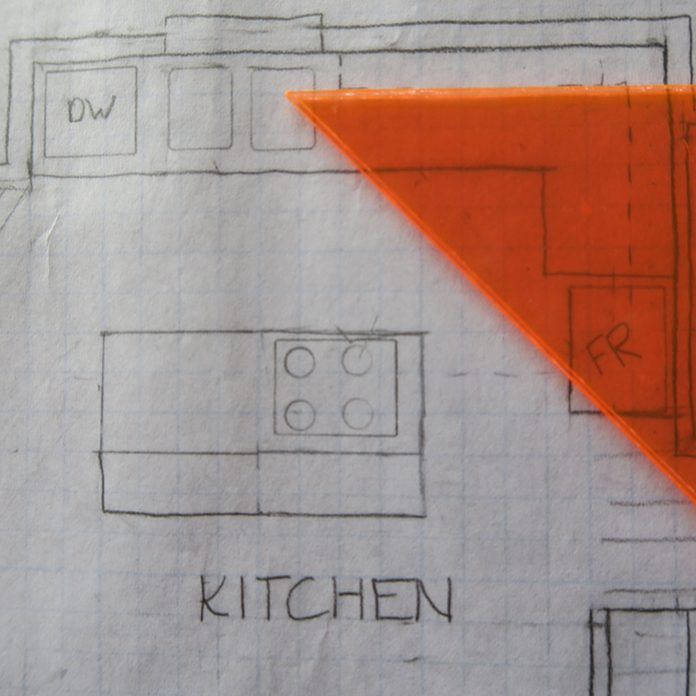
Ignoring Workflow
A proper amount of kitchen cabinets, quality appliances and durable materials are all important things to consider when renovating your kitchen, but if they’re combined into an efficient workspace, you won’t be getting the most out of your remodel. Be sure your kitchen’s busiest areas, like the sink, stove and refrigerator are positioned for a smooth flow for cooks and others. Kitchen designers often refer to this as the kitchen “work triangle.”
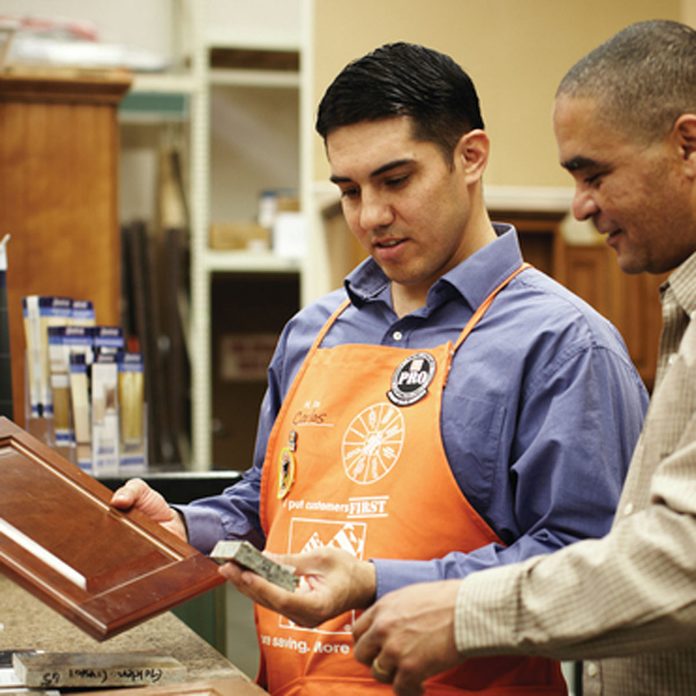
Refusing Help From a Professional Designer
DIY enthusiasts might be tempted to use their skills and creativity to do a kitchen renovation totally on their own. That’s what doing it yourself means, right? But as anyone who has gone through a renovation will tell you, expert advice is always helpful, even for a DIY kitchen renovation. A professional can help you fine-tune your plan and offer advice that could save you from purchasing inefficient products and materials and choosing a design that doesn’t fit your needs. You can even stop by many home centers for a free consultation. Check out these kitchen remodeling ideas and tips.
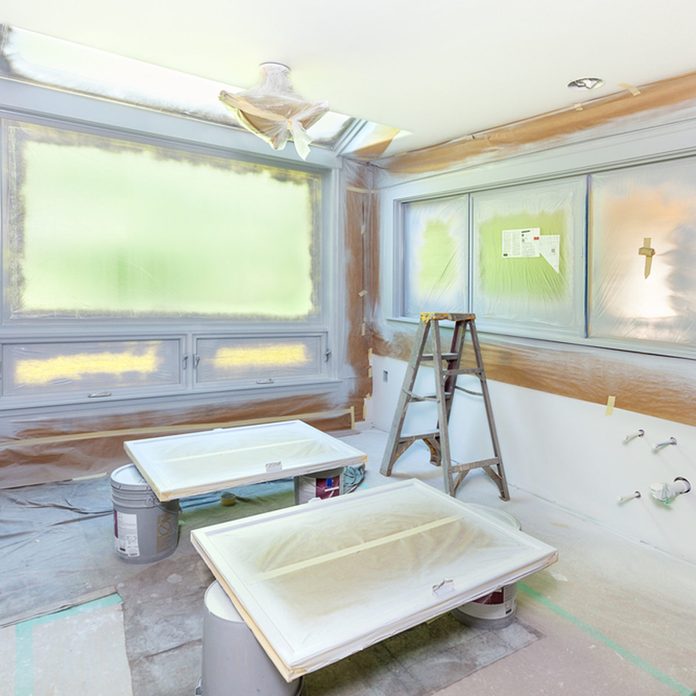
Forgetting the Rest of Your House
It’s easy to get caught up in your kitchen remodel and neglect to take care of the rest of the house. Your kitchen will most likely be out of commission during the remodel, so set up a temporary galley elsewhere in the house. Also, be sure to protect other parts of your house from the dust, debris and splatters from the remodel. Take the time to protect other spaces and that will allow you to fully enjoy the end result of your kitchen renovation without damaging the rest of the house. Here’s what you need to know about protecting your home during a remodel.
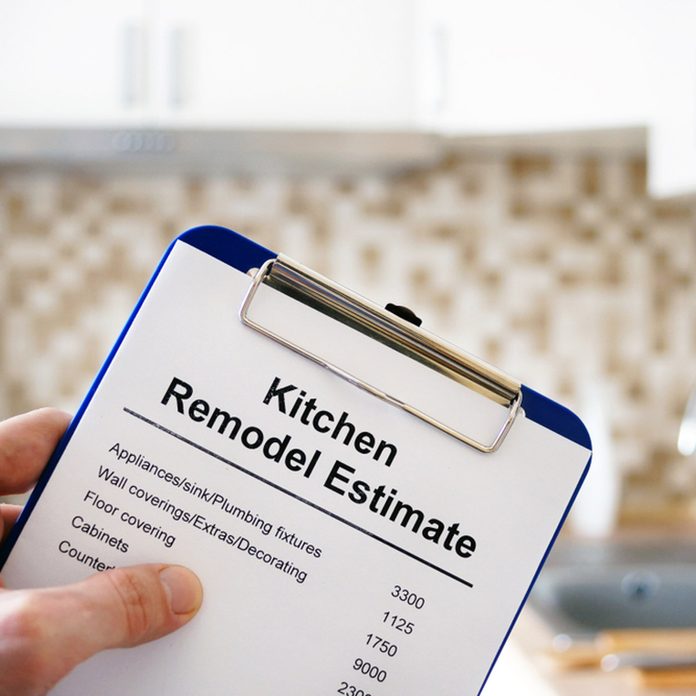
Forgetting Your Budget
If unforeseen problems arise during your kitchen remodel, costs can escalate quickly. If this happens, review the plans and see if there is anything you can cut back on or if there is something that you can put off for a while until you’ve saved up for it. It’s important to stick to your original budget so you don’t end up resenting your costly kitchen when the remodel is finished.
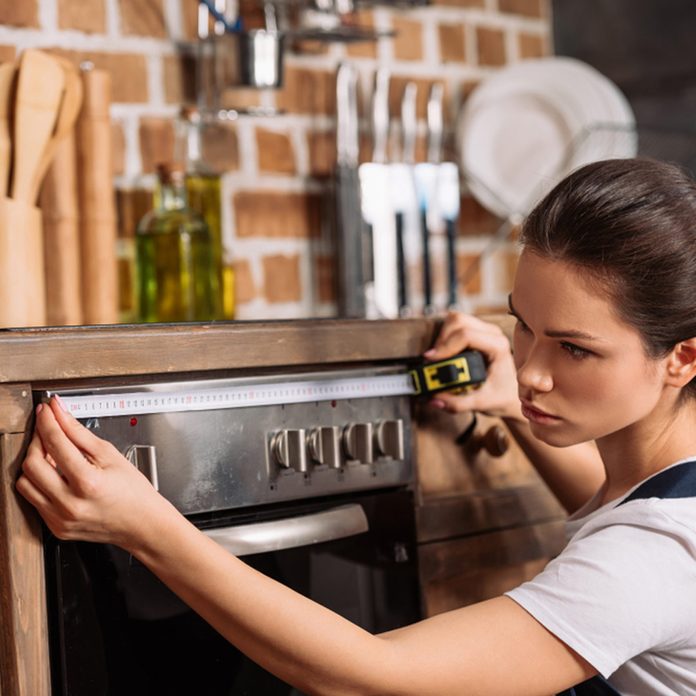
Choosing Appliances Last
One of the biggest kitchen renovation mistakes is choosing your appliances last. It may be more fun to plan the cabinet layout and countertops first, but always choose your major appliances first and then build the plan around those dimensions. You’ll be disappointed if you order cabinets and then find out that you only have room for a 24-inch-wide oven. Here’s what to look for in a new fridge.

Forgetting to Have Fun
A little laughter and lighthearted humor is a must during any remodeling project. Remember, remodeling your kitchen is supposed to make you happy, so let down your guard a little bit and allow the mistakes and mishaps to slide off your back as much as you can. Also, be sure to let your creativity shine! Go for a bold backsplash or try a multi-material kitchen island to help create a space that doesn’t take itself too seriously.

Letting the Project Strain Relationships
This is rather grim, but according to Business Insider, 12 percent of couples consider getting a divorce while renovating their home! One lawyer has even said he’s seen more divorces over remodeling projects than from extramarital affairs. Whether that’s true or not, remember that people always come first.
Here’s advice on how to complete your kitchen renovation without getting a divorce.

Not Getting the Family Involved
‘My wife decides all the details about how something should look, and I retain veto power if I DISLIKE anything.’ – reader, David Hawkins
‘Get the whole family involved. A remodel that doesn’t meet everyone’s needs will lead to more arguments and more stress as soon as the last nail is driven.’ – reader, Paul Bianchini
‘My wife likes to say, ‘We work best together in separate rooms.” – reader, Ed Stawicki
‘I let her make all of the design decisions and I do all of the work, which is the part I enjoy!’ – reader, Dave Pike
If you want a quick kitchen upgrade, try spray painting your kitchen cabinets.
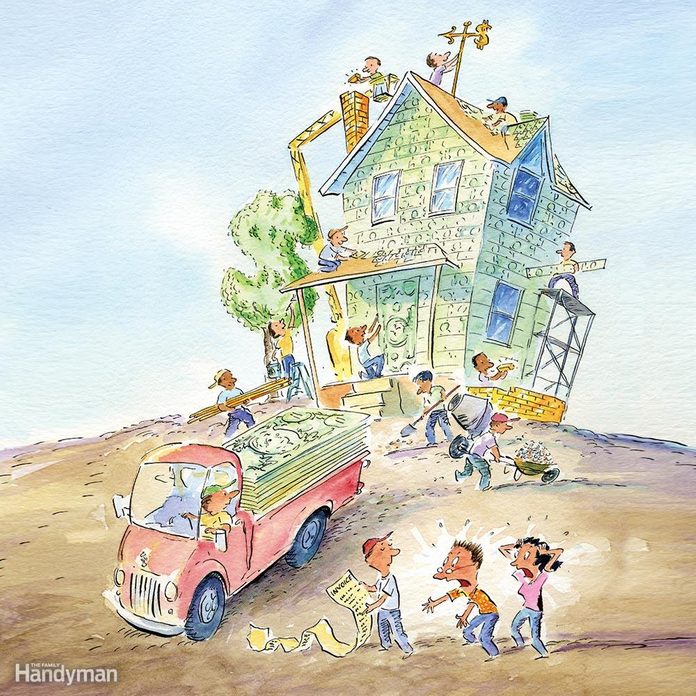
Not Picking Your Battles
‘Pick your battles. If it really doesn’t matter to you if the room is blue or yellow, let it go.’ – reader, Nancy Hayes
The 3 most important words in a marriage: you’re right, dear!’ – reader, Larry L. Meacham
‘I do everything but paint. I’m not allowed to do any of that at all, and for 27 years that has worked fairly well.’ – reader, Michael Gilfilian

Timing Is Everything
“I tell my wife how long a project will take — and she knows it will take three times longer.” – reader, Dave Switzer
“I tell my wife, ‘Let me finish one project and enjoy it for at least a week before you add another to my list.’ ” – reader, Brian Feltz
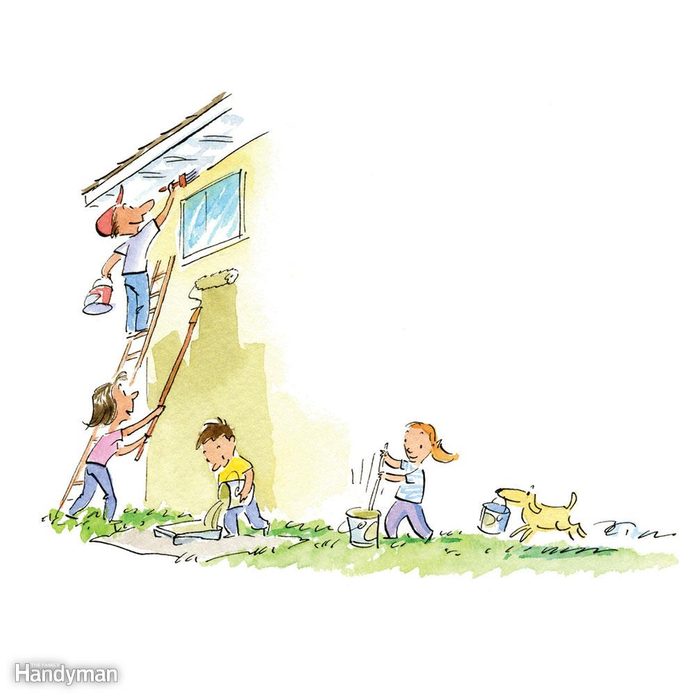
Happy Family Means Happy Renovation
‘During big projects, I turn off the saw one or two days of the week to reacquaint myself with the family. It may take a few days longer to finish, but I won’t have to sleep on the couch.’ – reader, Brian Barger
‘During a recent project, I spent the early evening with my family, tucked my girls into bed, and worked from 9 p.m. to 1 a.m. I lost some sleep, but this kept the family happy.’ – reader, Ben Kim
Patience! ‘My wife doesn’t work with tools every day, so she doesn’t know one saw from another. You have to be ready to explain things a lot.’ – reader, Mark T. Platte
‘If mama isn’t happy, nobody is happy.’ – reader, Charlie Marken

Not Taking Advice from a Wise Contractor
‘Be sure you and your spouse are on the same page. Don’t even start the remodel if you’re not. Trust me—if you can’t decide on things up front when it’s calm, you certainly won’t be able to when the clock’s ticking, the workers are standing around, and the pressure’s really on!
Know your budget. A fight over the remodeling budget was the biggest argument I ever saw, and there’s no way for the contractor to fix it.
Make three lists: Must Have, Would Like If Possible, and Optional. Keep as much of List 1 as you can, because that’s why you’re remodeling. Keep 10 to 25 percent of List 2, depending on budget. Toss all of List 3.’ – reader, Paul Bianchini

Forgetting to Laugh
“We decided to strip and refinish our kitchen cabinets during a heat wave with 90-plus degree temperatures and 90 percent humidity in a house with no air conditioning. As the sweat was pouring down, and the fumes were burning our eyes and skin, I looked over at my wife and said, ‘This is more fun than sex!’ We both laughed and got back to work.” – reader, Ed Stawicki
“What doesn’t cause you to divorce doing DIY projects, just gives you great stories to laugh about for years after.” – reader, Jordan Van Moorleghem
You’ll get a chuckle out of these 36 almost unbelievable electrical and plumbing goofs.

Caution: Remodeling Can be Hazardous to Your Marriage
- One divorce lawyer says he’s seen more divorces over remodeling projects than from extramarital affairs.
- On a scale of 1 to 10, family therapists rate remodeling projects at about a 6 in terms of stress on a relationship.
- Paint color is one of the greatest sources of DIY disagreements for couples.

Forgetting to Ask Questions
The single most important element of a smooth-running remodel project is communication, and that means asking questions and maintaining an openness to honest answers. If you’re not sure about the best course of action, pull out that phone and call a more experienced friend, or hop over to a site like Family Handyman, where you’ll find all the resources you need to make an informed decision.
As a DIYer, it can be tempting to try to work through a problem on your own, even when you don’t have a clear game plan. This may be the sign of a great work ethic, but it’s not always the smartest decision. Sometimes it’s in your best interest to stop for a moment and ask yourself questions like, “Is it really a good idea to remove that load bearing wall?”

Not Taking Pictures: They’re Worth a Thousand Words
There’s a reason why architects use blueprints instead of essays to communicate building plans. Depending on the complexity of your remodel you might employ anything from sketches to stamped engineer drawings, but the use is always the same: to provide an agreed-upon goal for the project.
Blueprints and sketches aren’t the only visual aides available to you. A collection of inspirational images (often called a “look book”) can establish a definitive goal for the finished project. This is much like the way cook books sometimes contain step-by-step instructions along with a photo of the finished dish. Look at the way this article combines build plans with inspirational photos to make it easy to work with an end goal in mind.

Not Removing the Breakables
Before beginning work, identify what objects are vulnerable to the shocks and vibrations of the construction process. Most people think to remove obviously delicate items from the work area, but also stop to consider if there are any other objects that should be protected. If you’re installing siding, for example, remove any wall hangings from the interior side of the walls being worked on. The chances of hammer vibrations shaking them loose may be low, but that’s small relief when looking at a family heirloom lying broken on the floor.
If you’re working on an indoor remodel, consider moving furniture well out the way of both the work to be done and the path through which any materials and debris will be carried. When you do, be sure to take your time and move any furniture safely.

Not Being Honest with Yourself
Just as you need to stop and ask questions as a reality check, protect your sanity by honestly assessing your skills and comfort requirements before tackling a large remodel. Can you really live in a construction zone? Even if you have experience in construction, or thrive in the chaos and mess that comes along with a big project, that doesn’t mean you’ll enjoy going to bed with drywall dust covering your sheets.
Another area that is important to honestly asses is your skill level. No matter how experienced you are, chances are good that a remodel will push you to new level of DIY expertise. Everyone has a learning curve, it’s important to know where you stand on that curve before starting a new project. Pushing yourself is wonderful, but setting yourself up for failure is a nightmare. Analyze a project before you dive in and assess which tasks are best for yourself or others. Some jobs are complex or dangerous enough that they should always be entrusted to pros when you’re just starting out.

Not Preparing for the Worst
When it comes to the DIY lifestyle, it’s important to be ready for the unexpected. No matter how thorough your plans are, sooner or later something will go wrong. While you can never know what obstacles will rear their ugly head, it is at least possible to make sure that your response is appropriate and efficient.
If you’re working on plumbing, for example, make sure you know where the water shut-off is before you start work. You’ll also want to invest in emergency leak repair items such as clamps or Shark Bite caps. Sometimes a little bit of preparation will allow you to remedy a setback before it can grow into a full-blown disaster. This Family Handyman article covers quick responses to emergencies ranging from animal invasions to plumbing disasters and kitchen fires.

Not Having Prior Proper Planning
Planning is a broad term, but here we’re using it as the culmination of many of these other concepts. It’s great to have a look book, or to call in help, or to have an emergency kit for when things go wrong. But ultimately you’ll need all of these gears working together.
For some DIYers this level of planning involves a full-blown Gantt chart, while for others it might mean simply checking in with everyone on a regular basis. But if your preferred work style is diving in and improvising, you’ll need to take a serious look at whether you’ll want to tackle a full remodel. Frankly, whether you’re tweaking a bathroom or remodeling an entire kitchen, it doesn’t make sense to try and take shortcuts with your home and safety. Instead, make a plan, check in with your team regularly, and don’t be afraid to change it if the circumstances require.
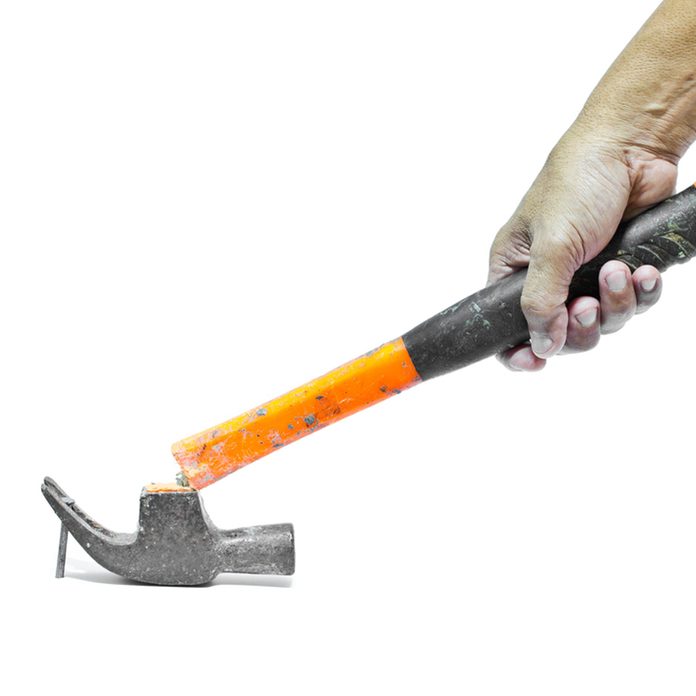
Tools: Buy or Rent
A simple decision that can make a big difference to your budget is whether or buy or rent any required tools. If you’ll need a tool for your remodel but doubt you’ll use it in the future, consider simply renting it instead. Tool rental houses make a wide selection of tools available at DIY-friendly prices, and the right tool selection makes a job much easier.
Alternatively, if the tool will go through a lot of abuse—such as a reciprocating saw being used in mud—consider buying a down-market version from a bargain outlet store. It’s a great way to use the tool without worrying about repairing it or returning it to the store. Of all the sources for these kind of hard-use tools, one of the very best is Harbor Freight.

This Isn’t a Television Show
You’re not on an HGTV home improvement show, so don’t expect your home remodel to be like one. No, it probably won’t take just eight weeks, and no you won’t be surprised by the result at the end (at least you shouldn’t be). Good contractors keep you updated on at least a weekly basis, so there are no giant reveals at the end of your project. These 12 remodeling ideas will pay off big time.

Not Being Open to Changes
Sometimes, even the best-laid plans need to be altered, so be open to some changes. Perhaps the tile you originally chose isn’t available, the exposed beams don’t look as good as you hoped or the wood used for your bathroom shelving is different than you expected. Know that when you get started, you may have to make some small alterations to your plan.
These 15 remodeling ideas will pay off in 2019.

Don’t Start Without a Timeline
Make sure you have a timeline before the actual work on your home remodel gets started. Your contractor should have a list of items that need to be purchased and deadlines for when those things need to be ordered. A timeline also ensures trade workers—everyone from plumbers and electricians to painters, tile and floor installers— know what is going on each week and how long they have to complete their specific job.
Thinking of remodeling an old house? Here are the pros and cons.

Not Pulling Permits
Whether doing the work yourself or using a contractor, be sure that any required permits are pulled. Some contractors may wave off the need for permits, but if the job receives a stop work order, it won’t be their home stuck in limbo. This is an especially foolish mistake for new homeowners working on their own and learning as they go. Although every municipality and every inspector is unique, treat your home inspector politely and you’ll likely find that they will give you advice and some guidance to make sure your project meets specifications. It’s like having a free construction supervisor!
Think your project doesn’t require a permit? Here are 13 home improvements that, surprisingly, often require a permit.
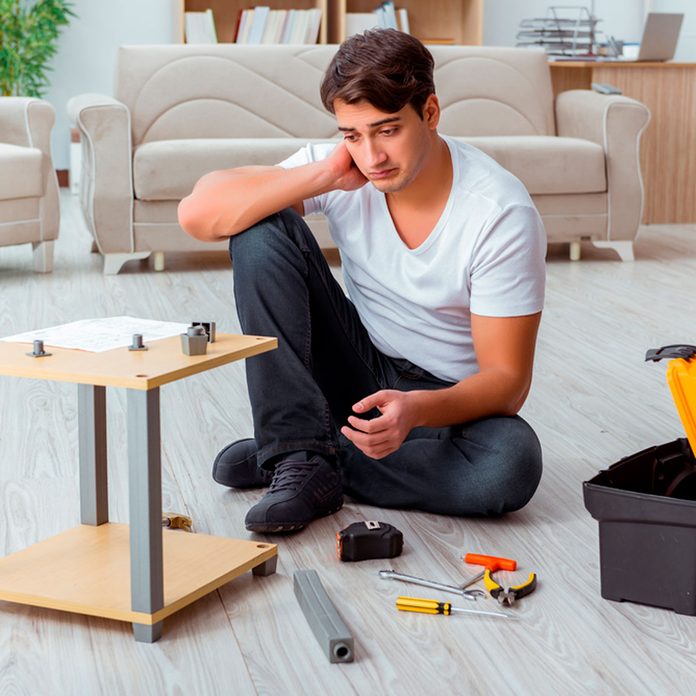
Not Crossing the Finish Line
It’s an amazing thing about most home improvement projects: no matter what the job is, it often seems like the last 20% is the most difficult. Whether it’s due to exhaustion, fading daylight, or simple boredom, an amazing number of DIYers struggle to finish a job and see it all the way through to the end. Make sure you go the extra mile to get things done and you’ll not only avoid a house full of half-finished projects, you’ll enjoy that well-earned sense of satisfaction that comes with a completed job.

Improper Measuring
A surprisingly common mistake among new homeowners is inaccurate measuring. Whether it’s only measuring once, pulling a tape measure from the wrong point, or relying on memory instead of writing measurements down, new homeowners often end up with a stack of miscuts and wasted materials at the end of the job. (And that only leads to more trips to the hardware store!)
Use best practices and measure twice, always dry fit (assemble without gluing or attaching) when possible, and become familiar with these 25 measuring hacks all DIYers should know!